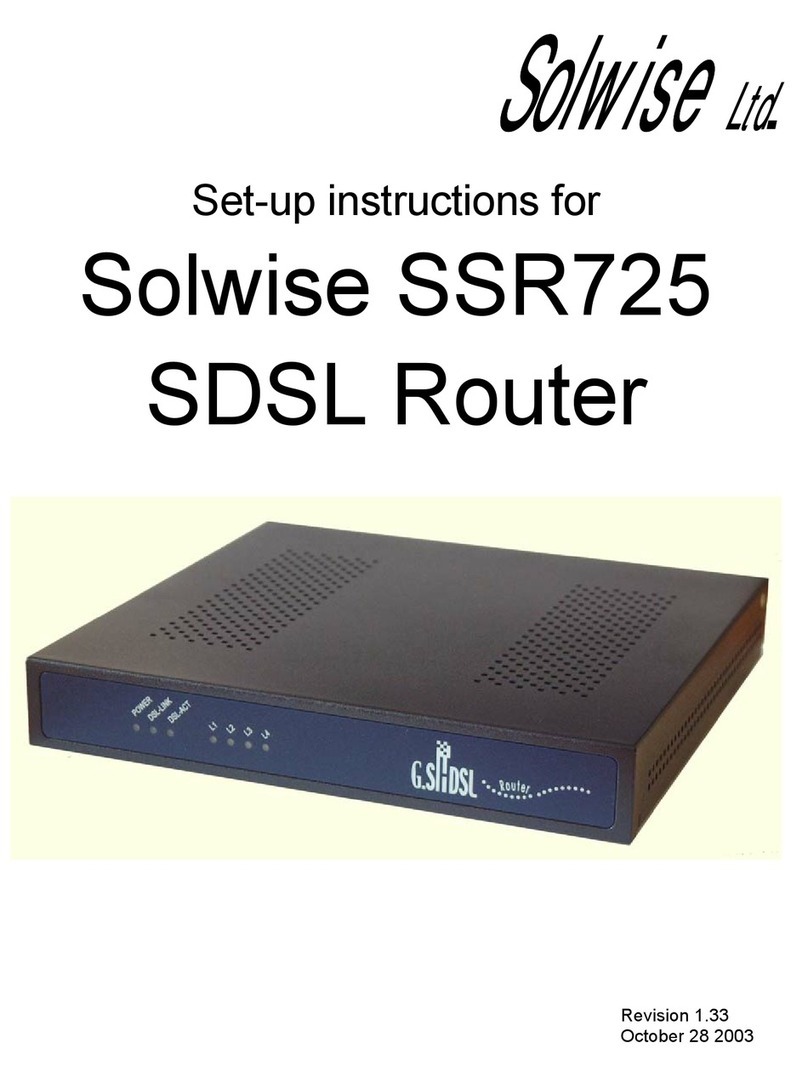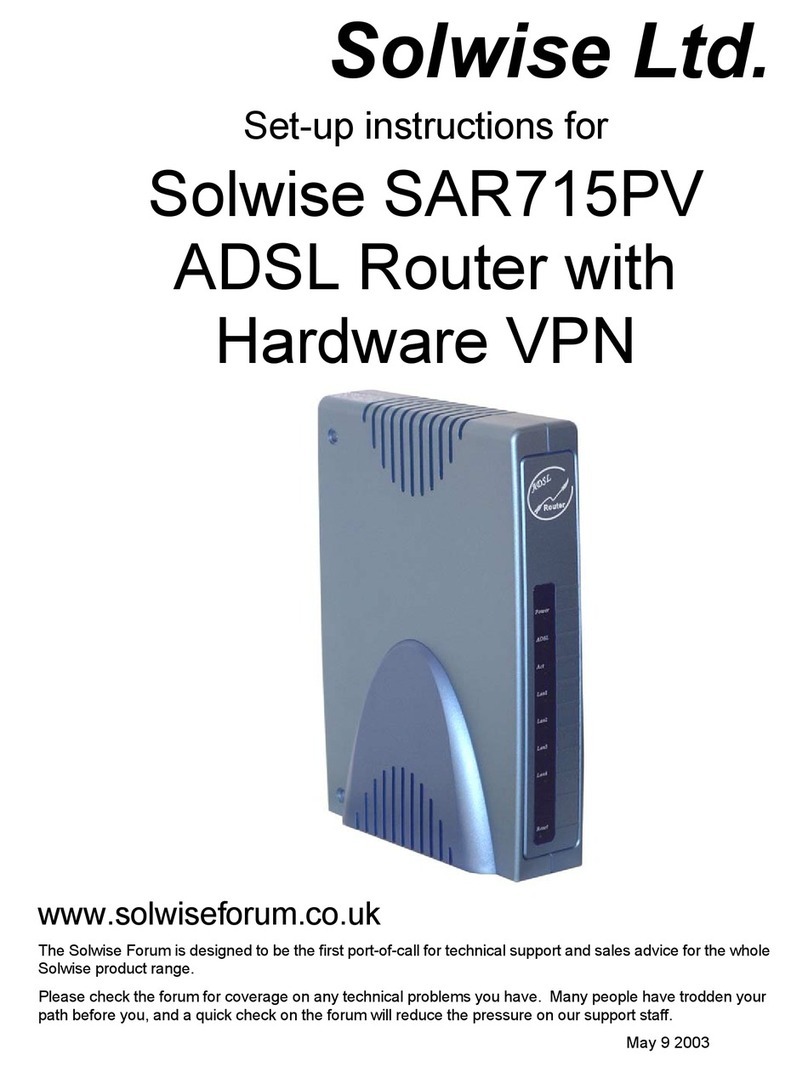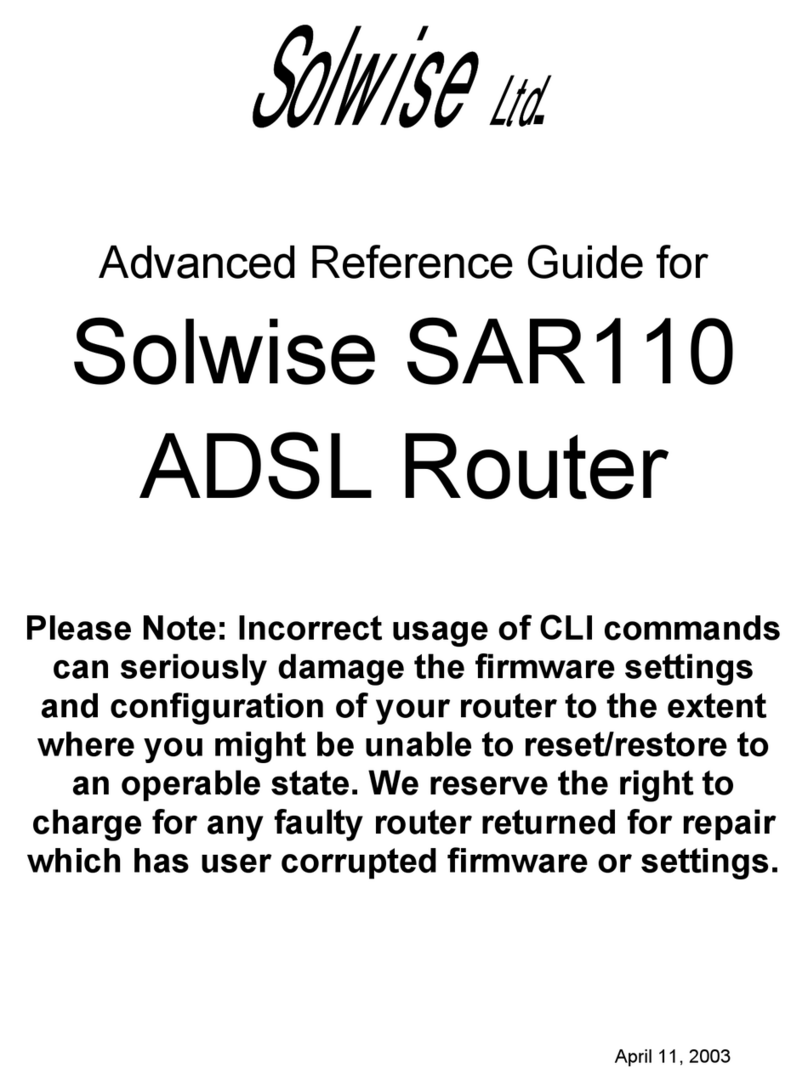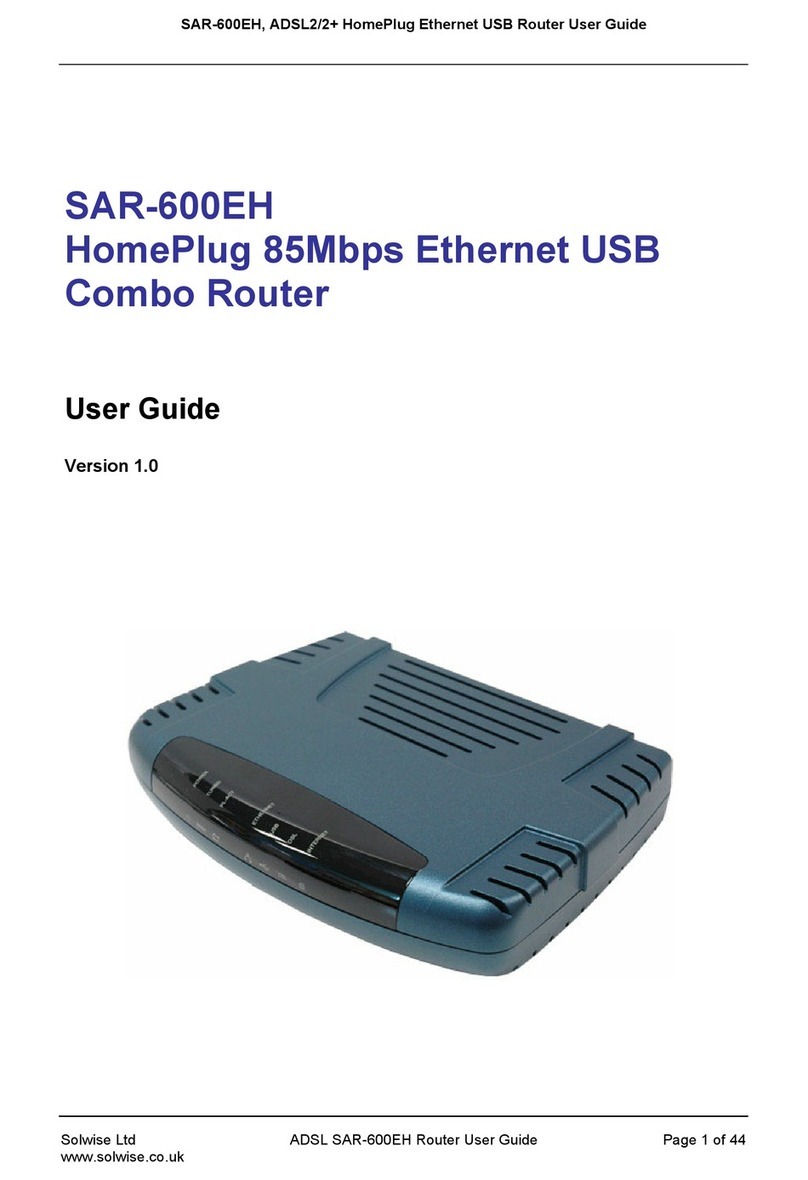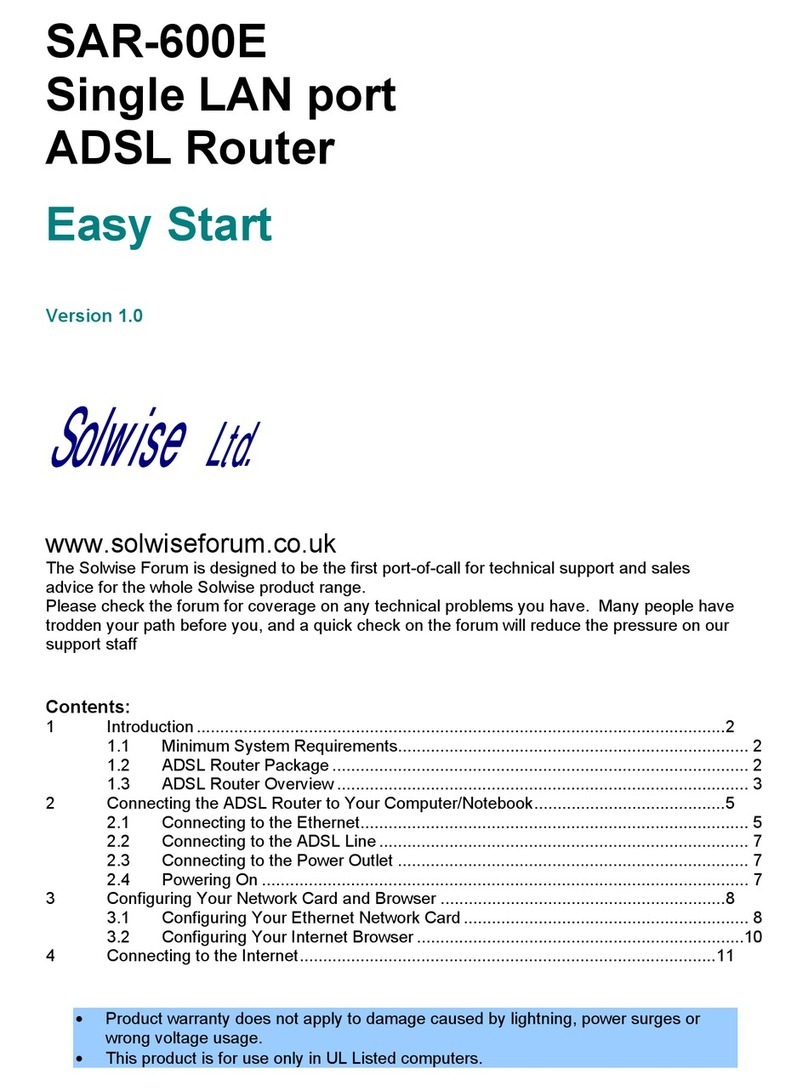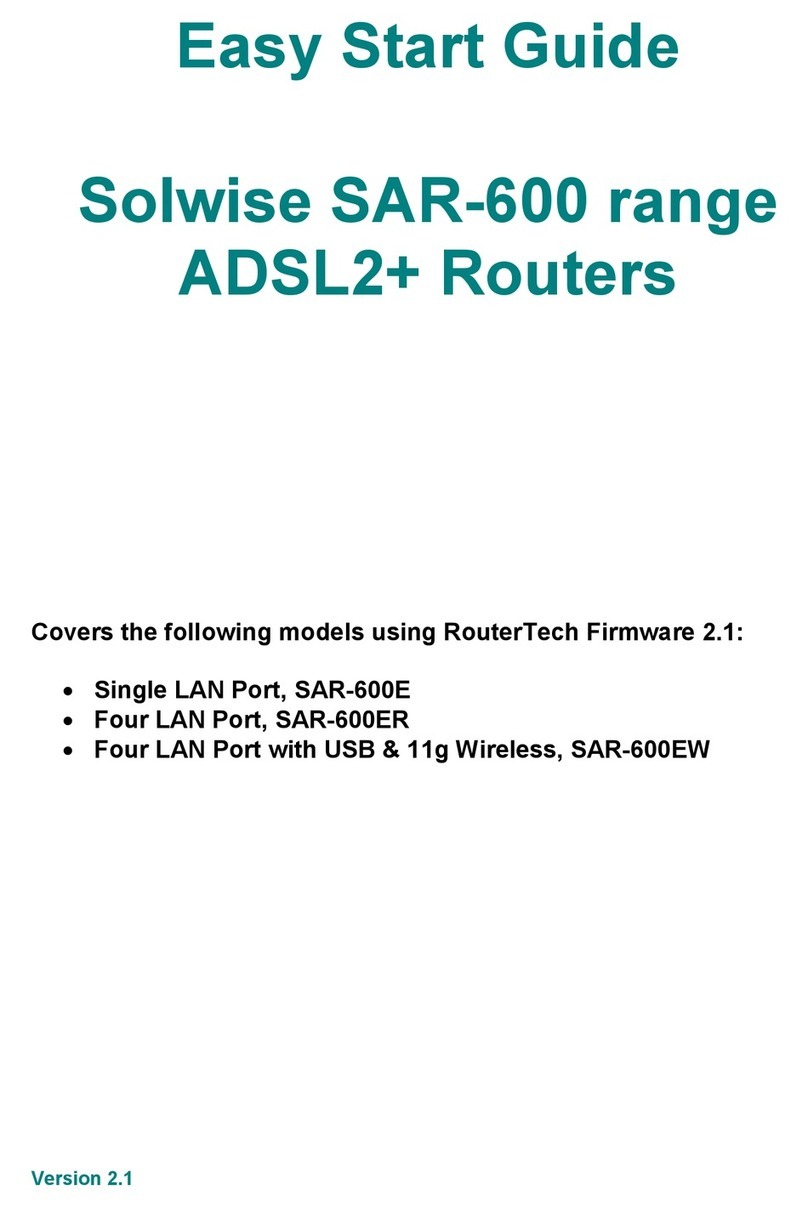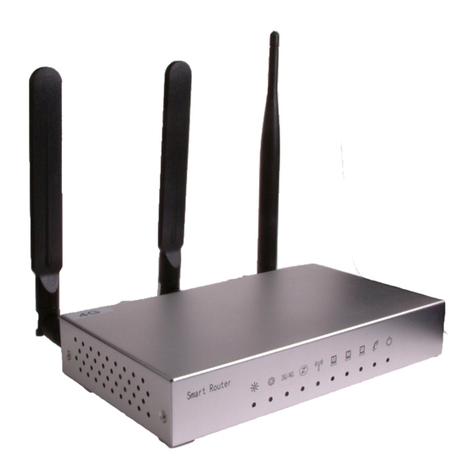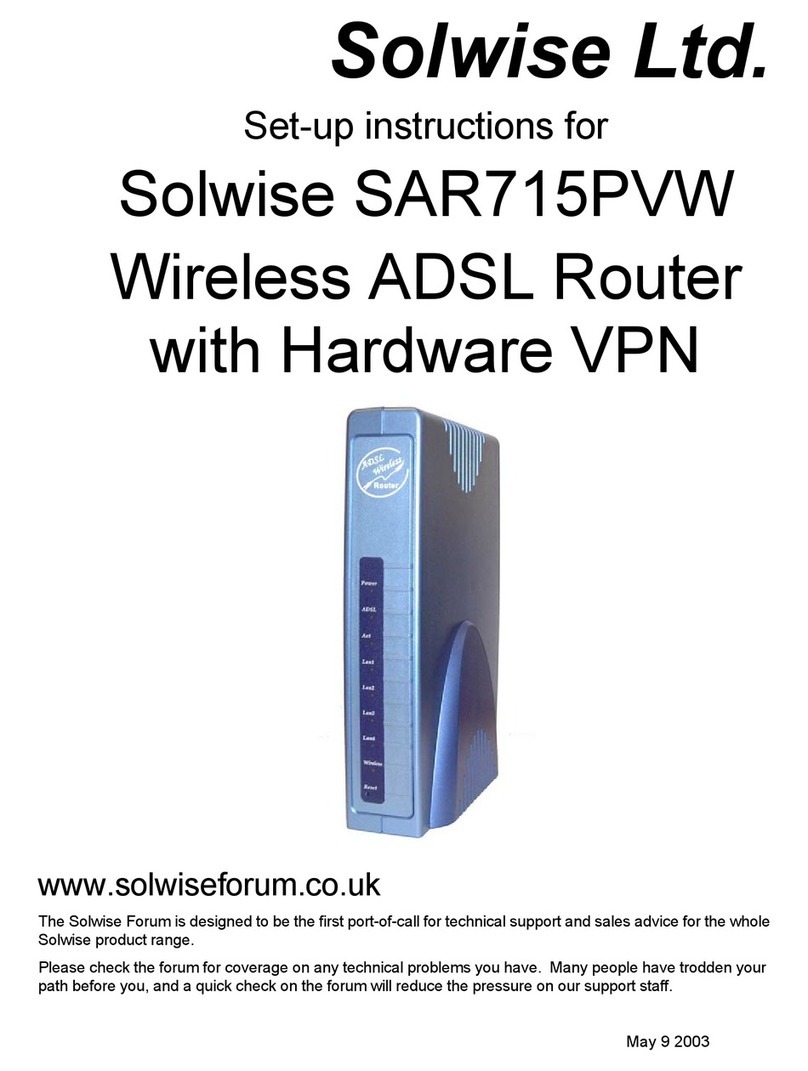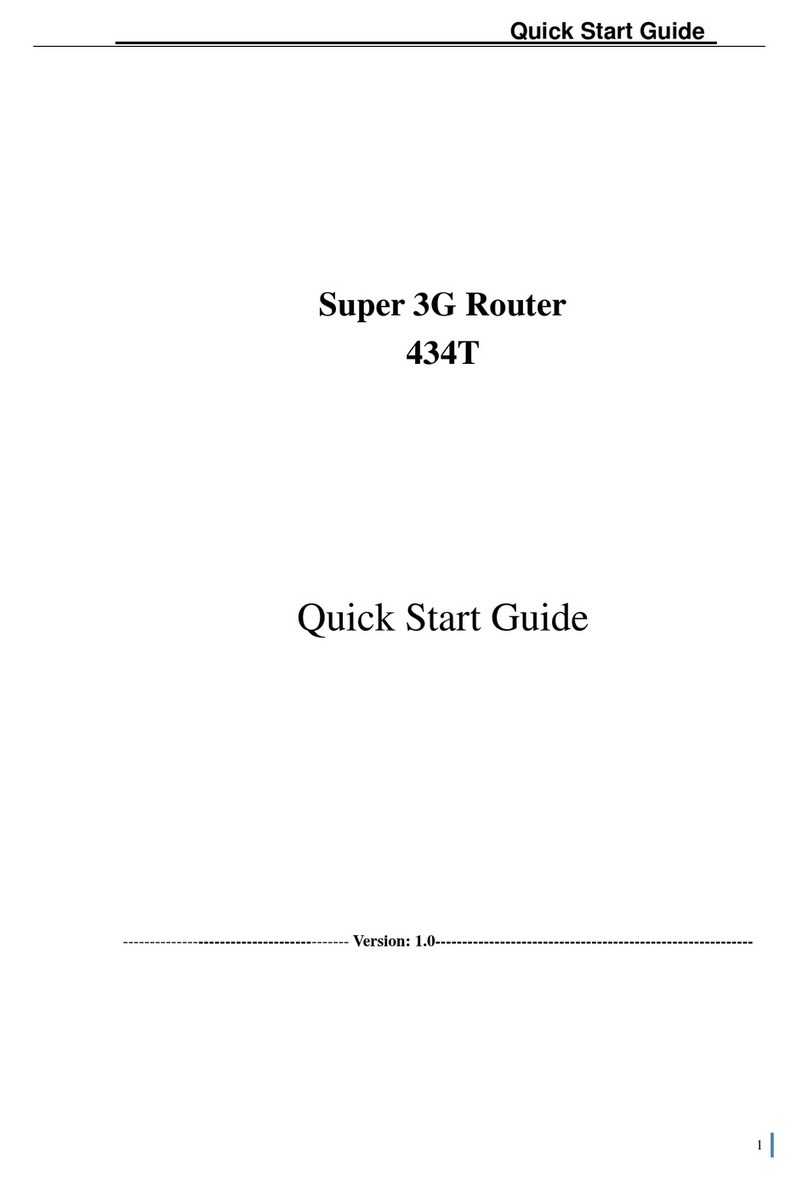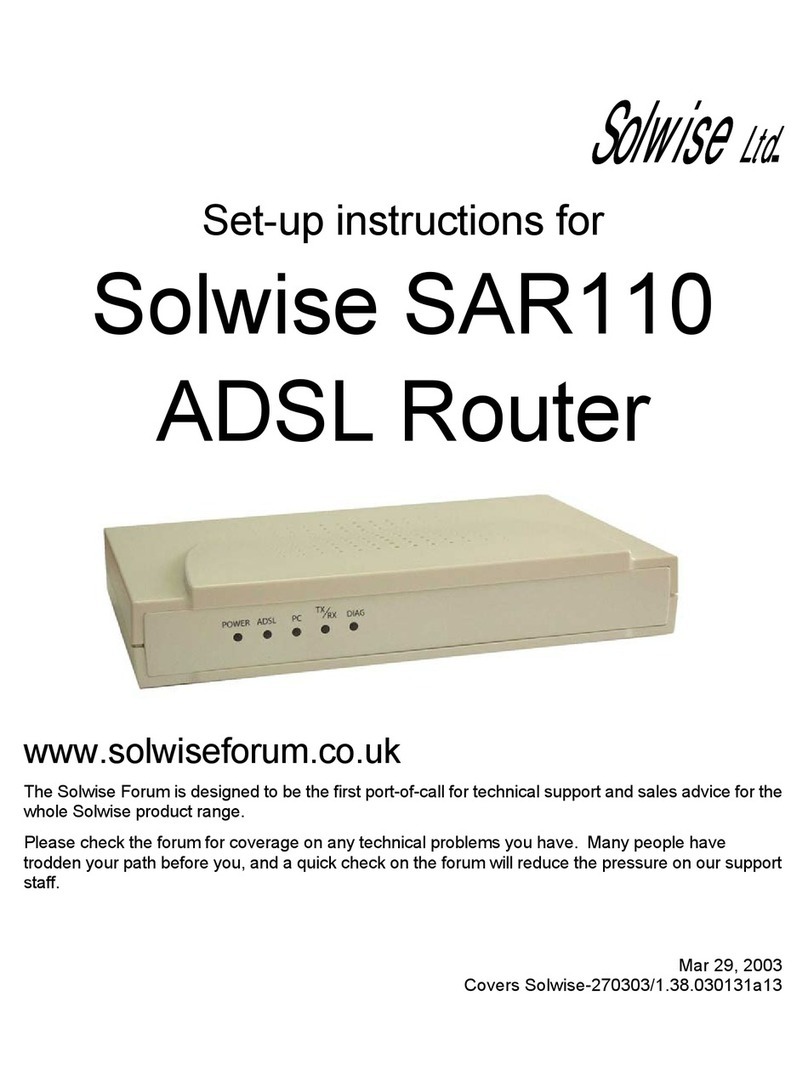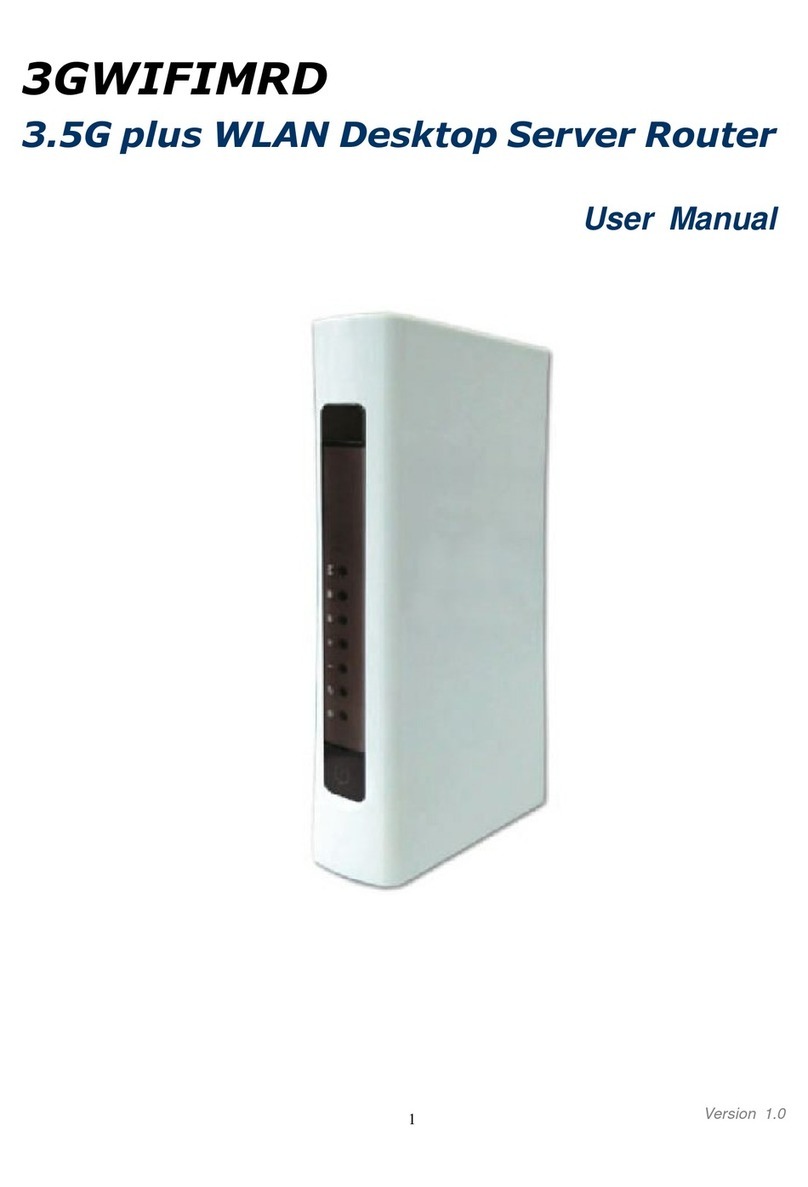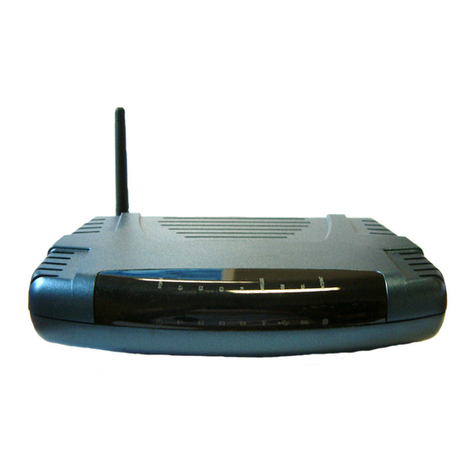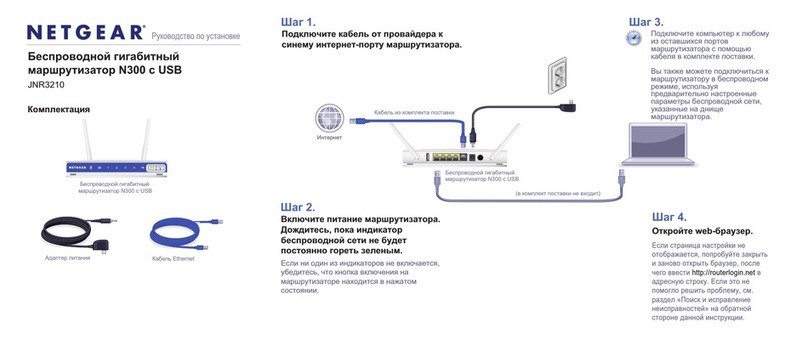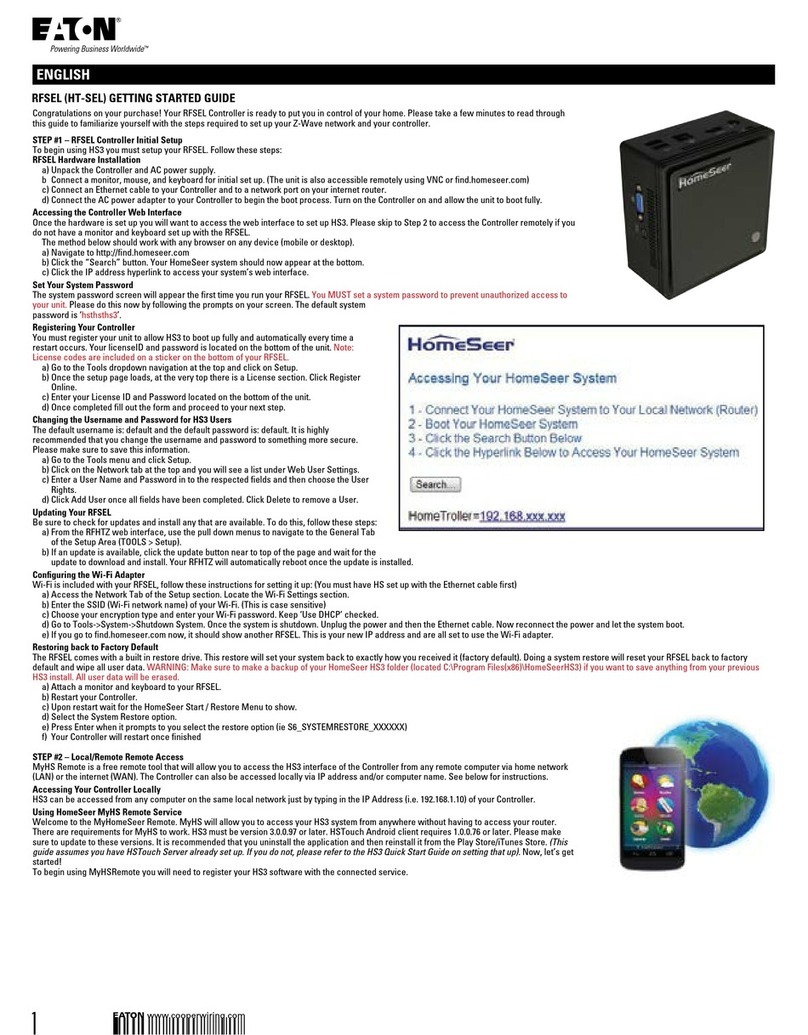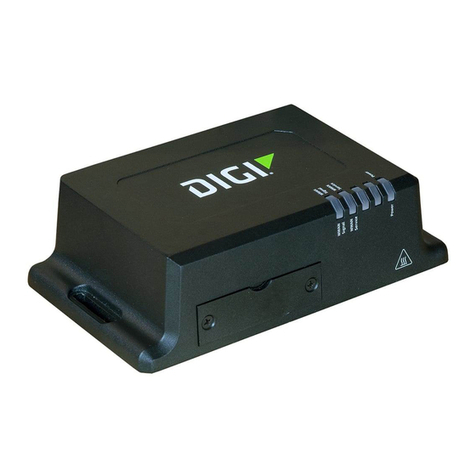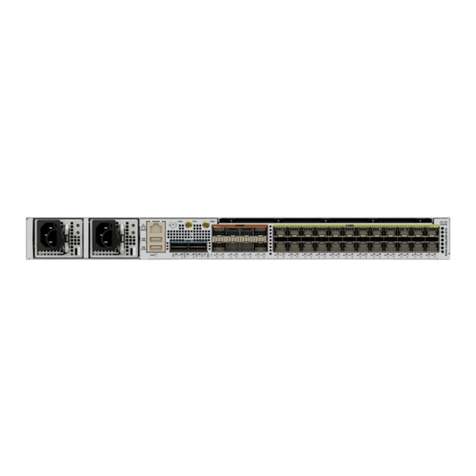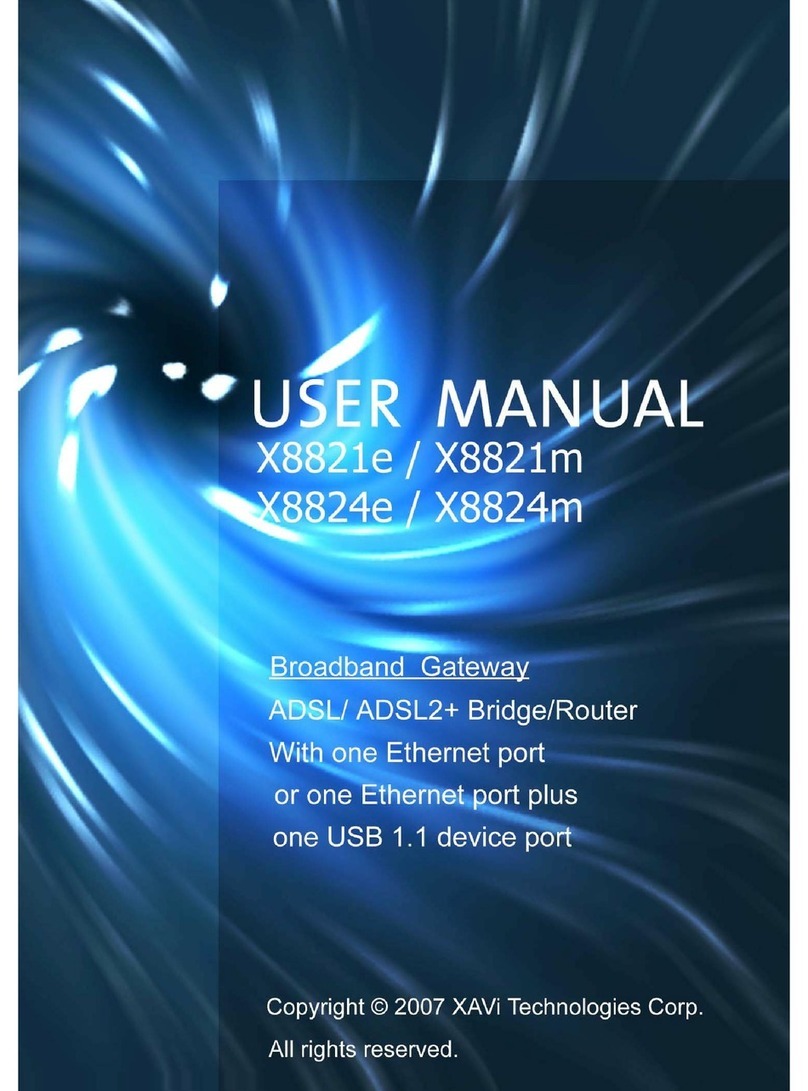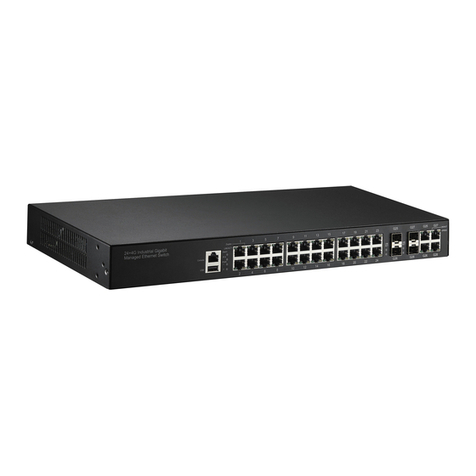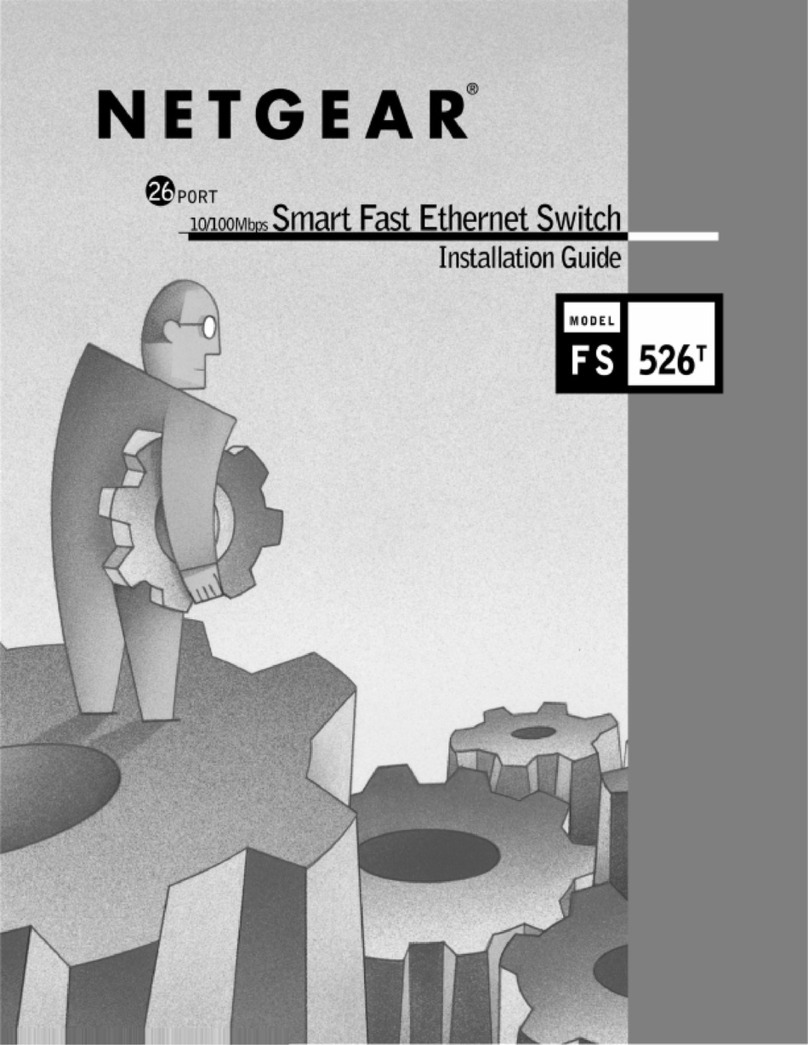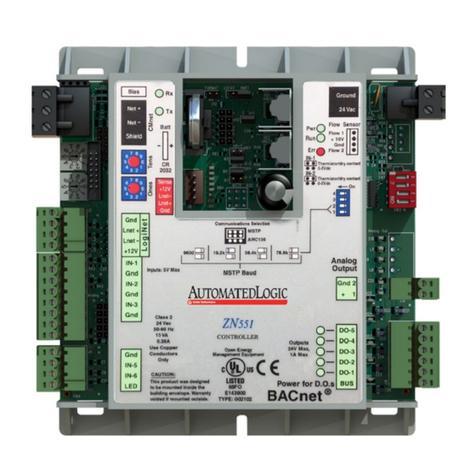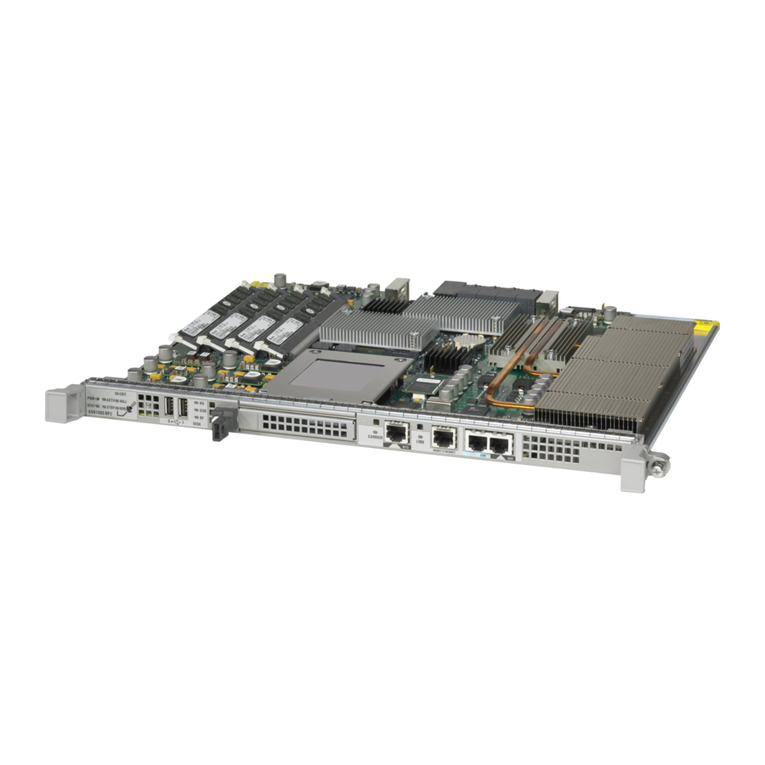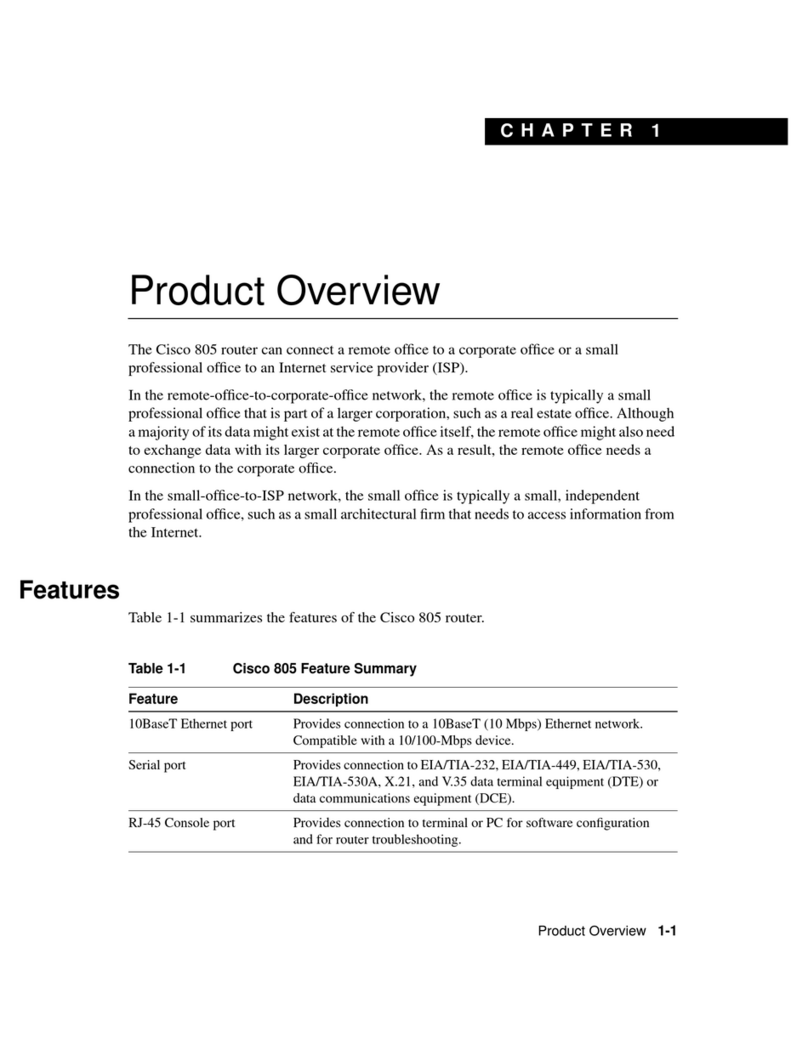
SAR-600E ADSL Ethernet Router User Guide
SAR-600E ADSL Router User Guide Page 3 of 39
Table of Contents
Preliminary Pages Page
Table of Contents ...................................................................................................................3
List of Illustrations .................................................................................................................5
Chapter 1 - About this Manual.............................................................................................8
1.1 Introduction ......................................................................................8
1.2 Scope and Purpose............................................................................8
1.3 Targeted Audience............................................................................8
1.4 Manual Organisation ........................................................................8
Chapter 2 – ADSL Ethernet Router Description .................................................................9
2.1 ADSL Router Overview ...................................................................9
Chapter 3 - Your Gateway At A Glance ............................................................................10
3.1 Ports and Buttons............................................................................10
3.2 ADSL Router Overview .................................................................11
3.2.1 Front Indicators ..............................................................................11
3.2.2 Back Panel......................................................................................12
Chapter 4 - Installing The ADSL Router ...........................................................................13
Chapter 5 - Setting Up the ADSL Router ..........................................................................14
5.1 Logging into your ADSL Router....................................................14
5.2 Quick Start......................................................................................15
5.3 LAN / DHCP Configuration...........................................................16
5.4 Diagnostic Test...............................................................................17
5.4.1 Ping Test.........................................................................................18
5.4.2 Modem Test....................................................................................18
5.5 Advanced........................................................................................19
5.5.1 WAN Connection ...........................................................................19
5.5.2 New Connection .............................................................................19
5.5.3 ADSL Modulation..........................................................................20
5.5.4 Quickstart .......................................................................................21
5.5.5 LAN Configuration ........................................................................22
5.5.6 LAN Clients ...................................................................................23
5.5.7 Application (UPnP) ........................................................................24
5.5.8 SNTP ..............................................................................................24
5.5.9 SNMP .............................................................................................25
